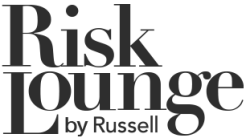
The Japanese earthquake and Tsunami is set to be the most costly event since Hurricane Katrina.
Despite the Tsunami still having to make its way across the pacific the insured costs are already estimated at well in excess of $60 billion
However Dr Adrian Chandler from the Aon Benfield UCL Hazard Centre said the costs could have been multiples of the figure had it not been for the building codes and resilience in Japan.
“The 1995 Kobe Japan earthquake (M 6.7) directly impacted a major urban area and caused the loss of over 6,500 lives and widespread severe damage or collapse of buildings. Economic losses exceeded $130bn. As a result, a new generation of seismic design codes was developed to implement a performance-based structural engineering framework in Japan. This explicitly addresses life-safety, reparability and functionality issues and requires sophisticated building design approaches to meet multiple performance objectives. The earthquake ground motion used for seismic design at the life-safety limit state is the site-specific shaking (i.e. stronger on soft soils) of a rare earthquake that is expected to occur once in approximately 500 years. For damage-limitation design, earthquake shaking at the level of once every 50 years (roughly the life-span of a structure) is employed.”
He added: “The 10 March 2011 earthquake (M8.9) has its origins offshore in a major earthquake subduction zone. Only 6 earthquakes have occurred worldwide in the last 50 years of this magnitude, and it is the largest ever to strike Japan. Its affects are very widespread and reach as far as Tokyo 250km away. The fault rupture is expected to be in the order of 500km in length and a tsunami-wave of 7-10m in height has struck the port of Sendai and stretches across the NE coastal region of Honshu Island with inundation extending several kilometers inland. Due to the proximity of the quake to the shoreline (less than 50km) the warning systems could provide only minutes notice of the tsunami wave striking the coast.
“Research on tsunami-resistant design in Japan and the US has led to a number of proposed solutions including the deployment of “vertical evacuation refuges” in combination with the early-warning systems in place for tsunamis. This is a building having sufficient height to elevate evacuees above the level of tsunami inundation and is designed and constructed with the strength and resiliency needed to resist the effects of tsunami waves. To date, few such structures have been built but there is no doubt such solutions can provide simple but effective measures to ensure life safety in such events, and prevent difficulties in achieving wide-scale evacuation in the minutes that such warnings may provide.”





